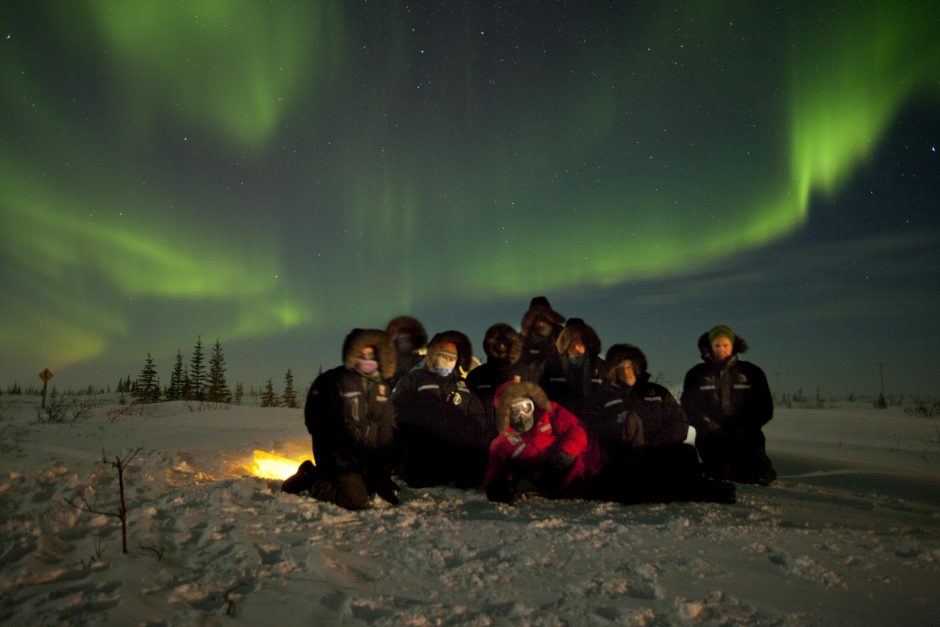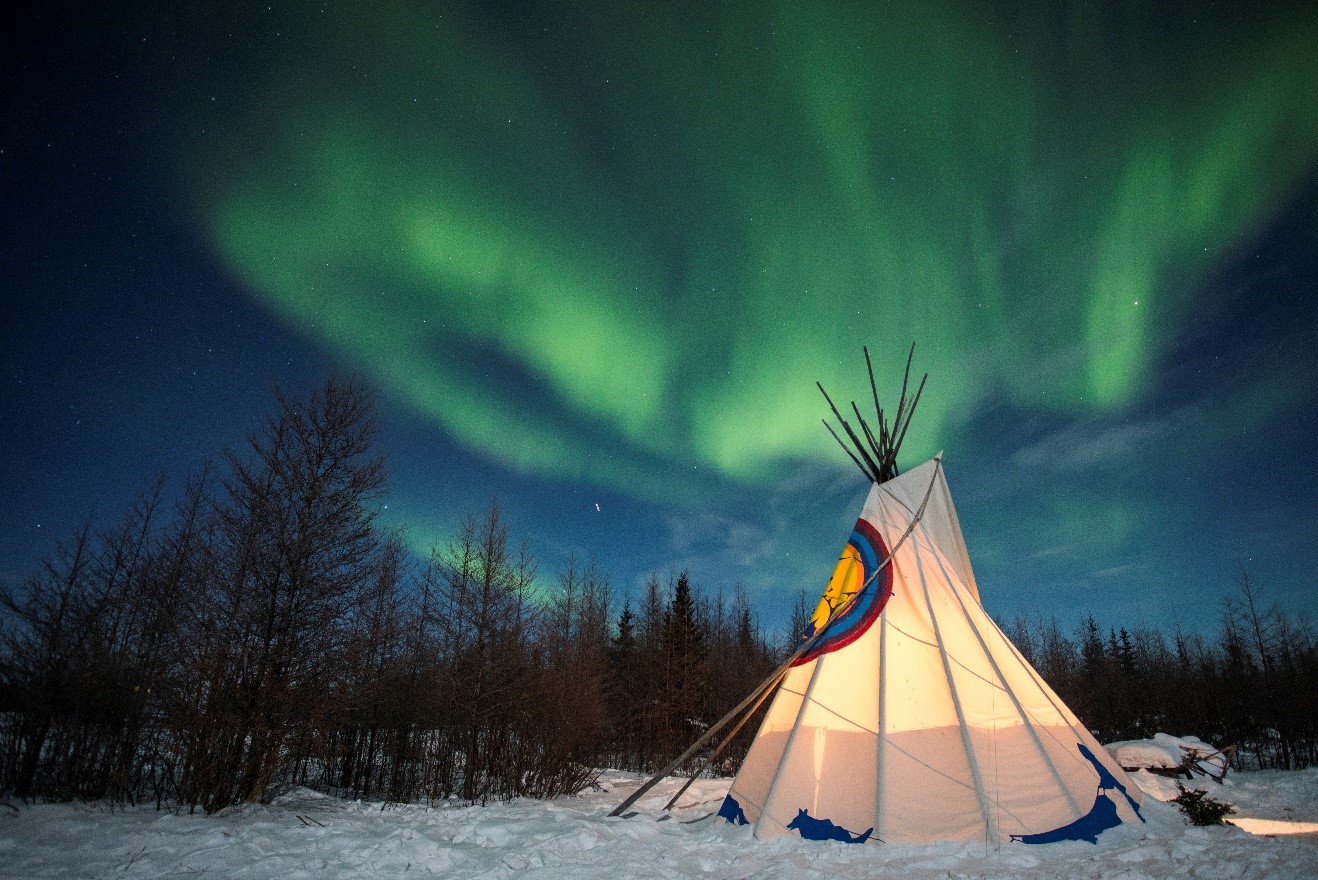
What’s in my Camera Bag? Northern Lights Photo Adventure
The aurora borealis is sensational in all ways, and capturing them in your camera is sure to be a highlight of your photographic endeavors. If you’re headed on a photo expedition to view and photograph the northern lights, be sure to bring the right gear, as there are specific requirements for this type of long-exposure photography.
Please note, photographic styles vary, as do conditions on the ground. While this is meant to be a guide for choosing your camera gear, you should consider your own photographic interests first and foremost.

No matter where in the world you go to view the northern lights, you’ll likely be doing so in winter for the long nights and generally-clearer weather. Thus, it’s actually about much more than simply photographing the aurora borealis—it’s an entire travel-photographer’s dream.
Ultra wide angle
These are some of the most helpful lenses, not just for photographing the aurora, but also for sweeping landscape photos of winter scenes in the polar regions. When I say ultra-wide angle, I’m talking about a 10-22mm or 12-24mm on a crop-frame sensor or 16-35mm or 17-40mm on a full frame sensor. Although these aren’t necessarily in every photographers kit, they are very useful, specifically when capturing the northern lights for a few reasons. First, these ultra-wides allow you to get LOTS of sky in your shot, which is good for getting the most aurora you can—definitely a goal of aurora photography. And second, with the extreme wide angle (bordering on fish-eye, but rectilinear) you can be sure to incorporate interesting foreground elements like snowbanks, spruce trees, tipis, igloos, etc.) at the same time as capturing the beautifully-lit sky.
And finally, having an extreme wide-angle allows a certain margin of error if you don’t compose your shot perfectly. That is, if it’s tilted and not in line with the horizon, which is surprisingly common when you’re photographing in the dark. The beauty of these lenses is that you can straighten and crop your shot as needed in photoshop or lightroom, while still getting a lot in your scene.
Wide angle zoom
There are also very helpful lenses, and while they can be used to capture the aurora, too, they’re primarily good for an all-purpose lens. Whether photographing landscapes on the tundra, or capturing alluring travel photographs in and around town, a general wide angle zoom like an 18-55mm on crop sensors or 24-105mm on full frames, is extremely useful.

Zoom telephoto
These are your 70-200mm, 70-300mm, and on an extreme telephoto end, the 100-400mm varieties, too. To be frank, these are not significantly useful for a northern lights photo expedition, as you’ll want to be more versatile on the wide angle end of the spectrum. Nevertheless, you’ll probably find a use for this category of lens, even if you only use it for 10% of the time. The key thing to consider is that wildlife is not overly abundant in the winter, as animals are generally quite dispersed and not necessarily near towns or concentrated in wildlife conservation areas. It’s a big wide arctic out there, and they can be anywhere. You can certainly use these types of lenses for landscape shots, and they can be helpful for, say, photographing unique stands of spruce trees at a distance, but that’s about it.
There is always a chance of an arctic hare or fox sighting, but they tend to be so brief that you are unlikely to have this lens on at the proper time anyways. Certainly nothing like Polar Bear season in Churchill, Canada, when bears migrate and congregate in significant numbers in and around the town.
X-factor lenses
I love bringing my nifty-fifty lens with me on trips where there is some high quality travel photography opportunities. And nothing is quite as unique and iconic as the arctic for unusual and generally unique scenes. Read HERE if you’d like to learn more about what a nifty fifty is.
The other lens I would consider is a fish eye, as they can be quite fun when photographing the northern lights. It takes “ultra-wide” to another level such that you can get nearly the ENTIRE sky and foreground in the same shot. These do distort corners of your photo (as all fish eye lenses will do) but sky photography tends to be rather forgiving for these distortions.
Flashes
No need to worry about these, as you’re better off “light-painting” with a flashlight rather than a punctuated single flash.
Tripods
These are a necessity when photographing the northern lights and an essential piece of gear. When photographing the aurora, you’ll likely never be shooting faster than 5-second exposures, and realistically more like 10 to 20-second exposures. Thus, there’s just no way to hand hold at those slow shutter speeds.
If you don’t have a go-to tripod already, you’ll be best served if you pick up a decent one that you can grow with and easily use in difficult conditions (i.e., dark, cold, etc.). That is, practice using it before you purchase, if you can. Or, if you must buy sight-unseen online, make sure you do your research on the reviews so that everyone is happy with its functionality. For instance, some tripods have “snap locking” legs, while others have “twist locking” legs. If it’s challenging in the store, it will be even more challenging when in the field, in the dark, in -20F weather…
Other accessories
Not necessarily a photographic tool, but a headlamp is very helpful so that you can see what you’re doing and manipulate your tripod and camera hands-free. These lights are also great if you wish to “light paint” your subject (human, tree, inukshuk, etc.). Stay tuned on Natural Photographer for a future post on how to light paint with long exposures.
If you’ve made it to the end, you’ve probably noticed that the gear needed for northern lights photography isn’t quite the same as other nature expeditions. It’s a very different style of photography, which is why I do believe it’s critical to join a photo expedition if you’re indeed keen on learning how to photograph the northern lights. Not only will it teach you skills that you can translate to many other scenarios, you’re sure to come home with stellar photos.
And if you’ve photographed northern lights and have a favorite piece of gear, share it with all of us and leave a comment below.
All the best,

Court
Leave a reply